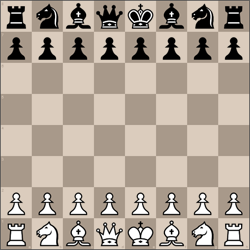June 09 1901
The Philadelphia Times, Philadelphia, Pennsylvania, Sunday, June 09, 1901
BAMPTON VS. DELMAR
How the Heroes, Drawing Masters and Shoemakers Played.
There is luck, more or less. In chess encounters, but the Franklin boys had an allopathic dose of the bad article in their last encounter with the Manhattans. It may seem a little ungracious to attempt to belittle the victory of our chivalric adversaries, but the verities of chess history should be preserved, especially when we consider that, in the opinion of the many, the man who offers no excuse has none.
The total result gave 10 wins to the Manhattans and 6 to the Franklins, counting the draws as halves for both sides.
First, as the hero of the occasion, stands S. Warren Bampton. His adversary, Eugene Delmar, plays sometimes better than at others, and always plays well, but “Warry” looked around the corner several times and the trick was done. Game below. Following in the footsteps of the illustrious Bampton came D. Stuart with win over Bostwick, and J. F. Magee, Jr., with win over Sieghelm. Second, the drawing masters, who no doubt consider that they should have been put first, for they, and they alone, play those flawless games without spot or blemish which, through the very necessities of the case, cannot be won for either side.
The gentlemen who produced these masterpieces were Young vs. Koehler, A. K. Robinson vs. Ettllnger, Newman vs. Roething, Shipley vs. Finn, C. S. Martinez vs. Marshall, and Voigt vs. Hodges. Nothing more need be said, for perfection, of course, can not be criticised.
Last, and very least, come the noble band of “shoemakers,” whose only degree of difference was that some “lasted” longer than others.
In the game, Schmidt vs. Reichhelm, the latter fluked a pawn in the opening, afterwards regained it, but at the expense of position. Mr. Schmidt, in turn, fumbled, which allowed black at least a draw. The latter, however, played for larger game, but failed and finally lost in a long end game. Even the immaculate Kemeny had a hole in his armor, and his adversary, Lipschutz, has a very long nose for discovering such discrepancies in his adversary's habiliments. Messrs. Stadelman and Mlotkowski went right in to “do up,” their opponents, Simonson and Halpern, but it wouldn't work. Morgan got up from a sick bed to play Halpern. Kaiser made a faux pas against Hynes, and Doerr, the best fast player in the club at 150 moves an hour, played at that rate vs. DeVisser, but the odds of time were too great to overcome.
One point of satisfaction remained. The cable match trio, Bampton, Newman and Voigt, emerged from the conflict with lustre undimmed and strength unimpaired.
MORE SILVER LINING.
While in search for silver lining we received a large quantity from John Lowber, the distinguished chess poet of this vicinity. He remarks that the six members of the Junior Chess Club on the team, namely, Morgan, Bampton, Shipley, Stuart, Magee and Young, won four and only lost two! Mr. Lowber adds: “Suppose the Franklin had been able to secure the remaining nine Juniors, Ferris, French, Hale, Jeanes, Maguire, Meredith, Scattergood, Schultz and Smyth. Would not the result have been different?“ We believe it would.
BAMPTON VS. DELMAR.
As before remarked, the most interesting game, from the Franklin point of view, was the Bampton Delmar partie, here rehearsed:
Samuel Warren Bampton (white) vs Eugene Delmar (black)
Ruy Lopez: Steinitz Defense
























